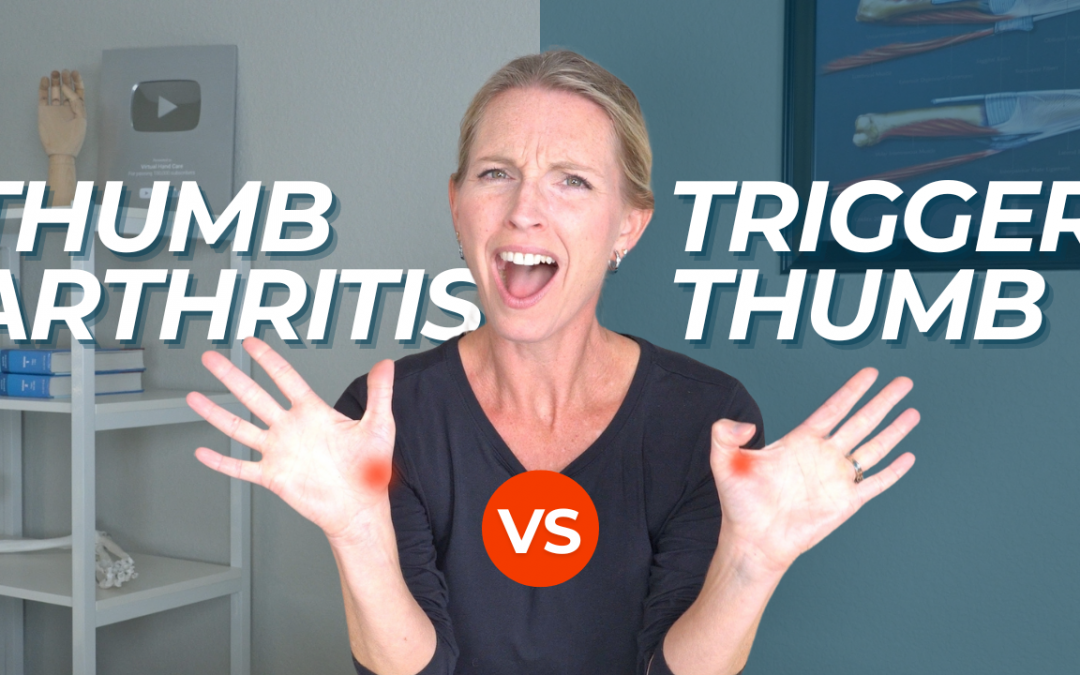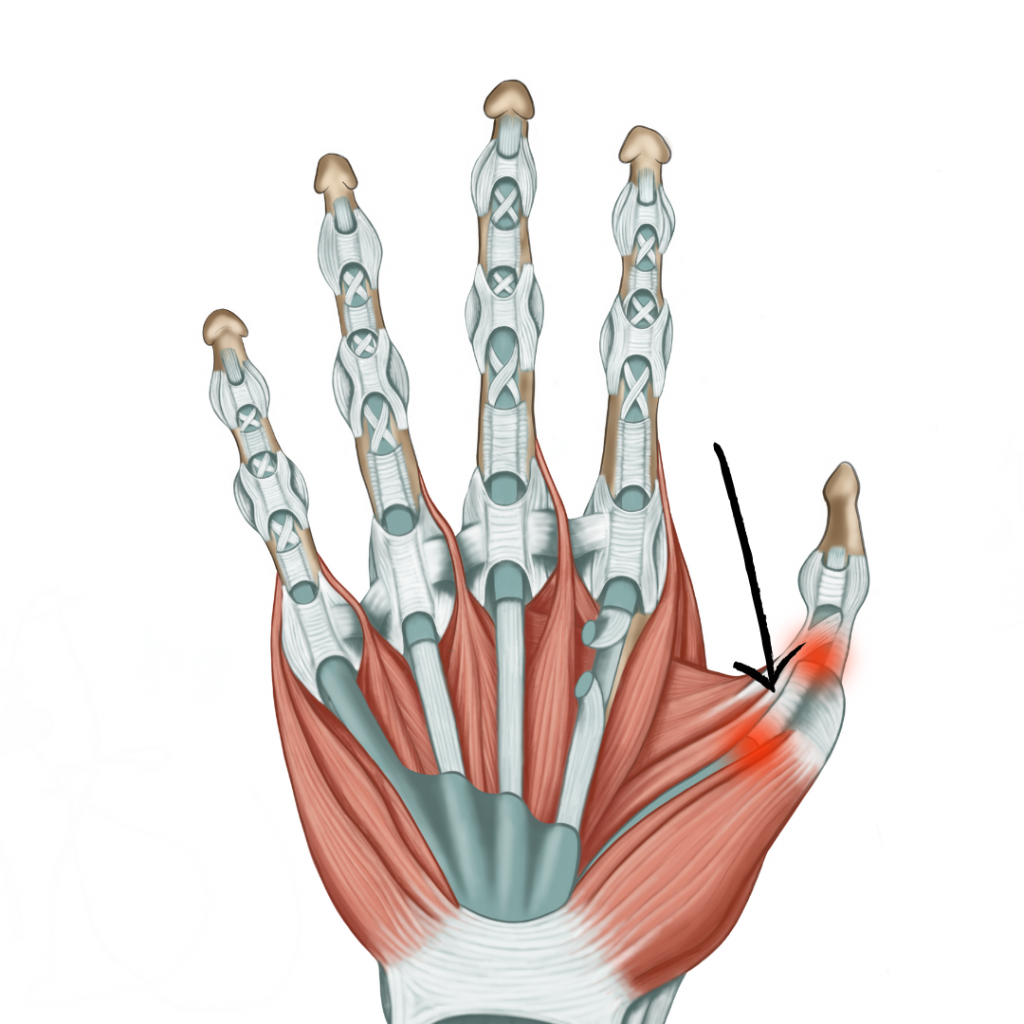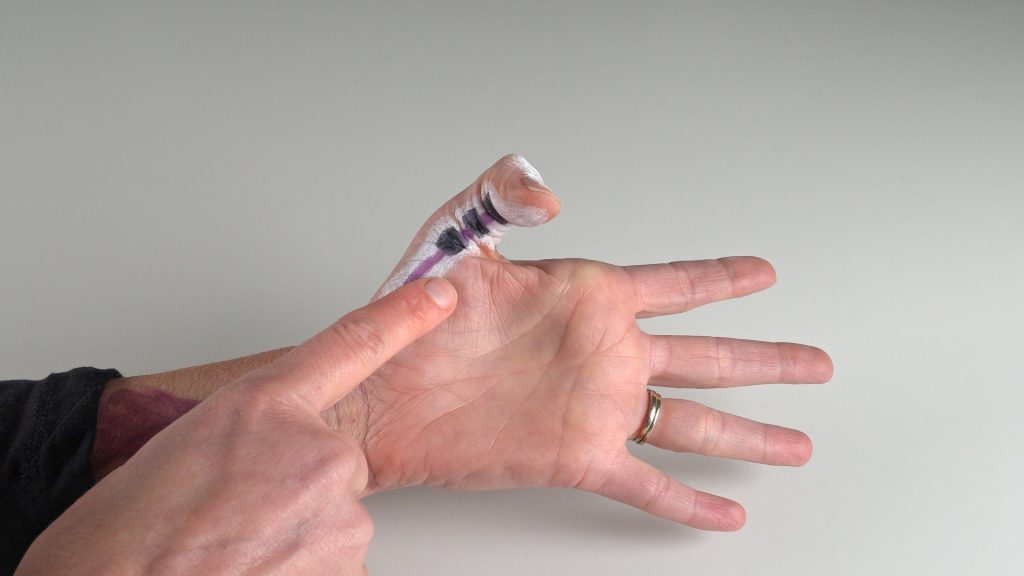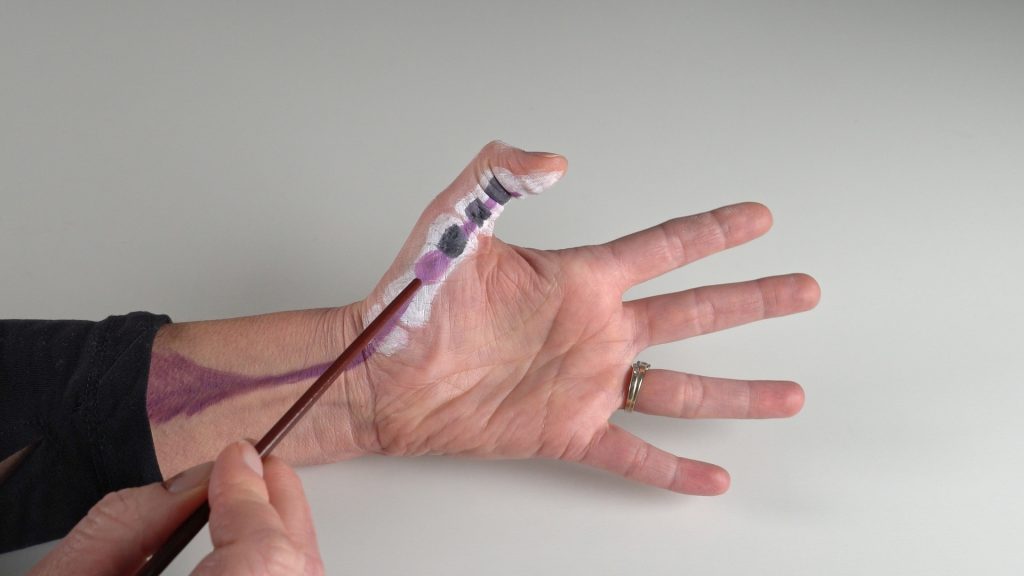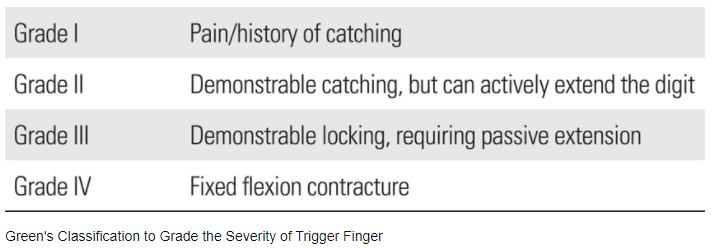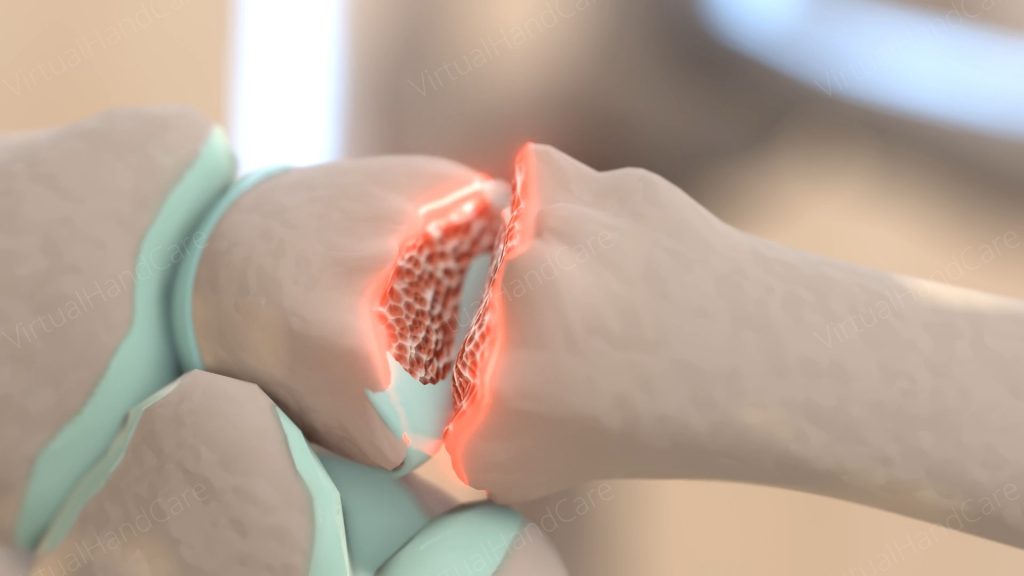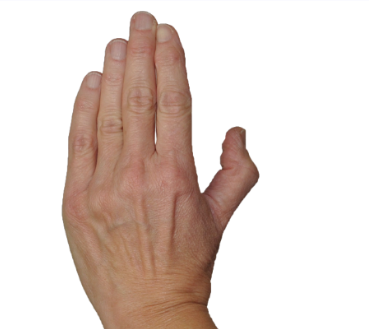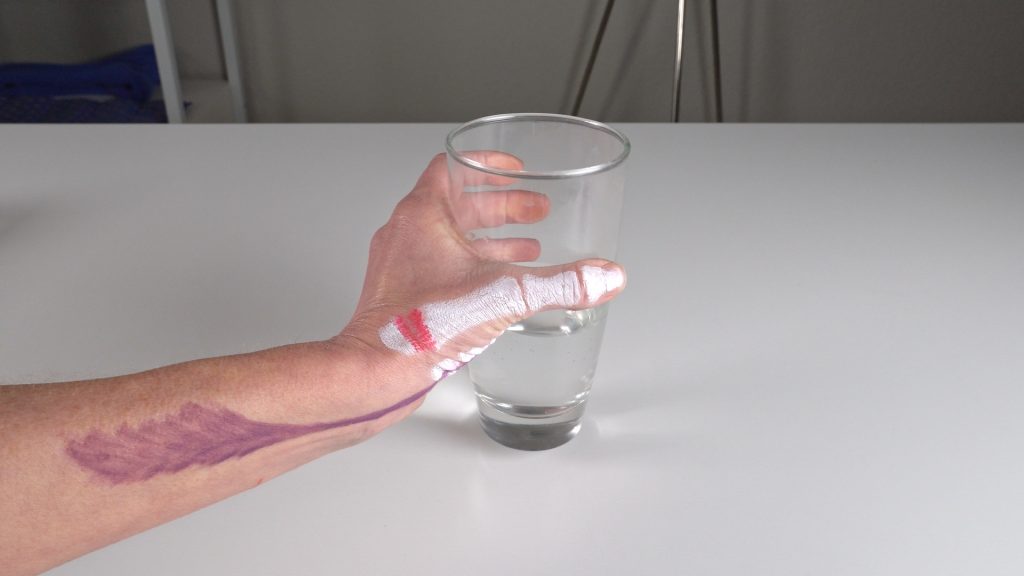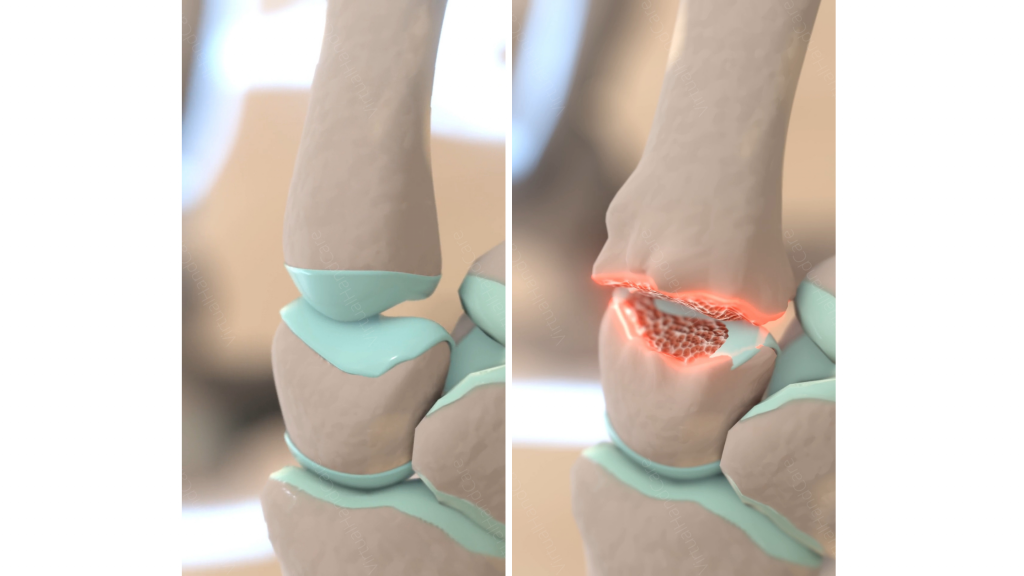Have you ever felt a painful snapping sensation in your thumb when you try to pinch or pull something small?
Or maybe you’ve experienced a sharp pain at the base of your thumb when opening a jar or turning a doorknob.
In this post, I’m comparing two common look alike thumb conditions that can sometimes be confused with one another. These are Trigger thumb versus Thumb CMC arthritis.
If you’ve experienced thumb pain, you could be dealing with either trigger thumb or thumb CMC arthritis. They do share some similarities such as producing sharp pain that can catch you off guard.
However, these two conditions are quite different in terms of their location, symptoms, causes, but also how you treat it.
So, let’s get to the bottom of trigger thumb and thumb CMC arthritis so you can be better informed with what could be going on in your hand and get on the right path to pain relief.
What is Trigger Thumb?
1st let’s take a look at Trigger Thumb.
Trigger thumb, is also known as stenosing tenosynovitis. This is basically inflammation of the synovial fluid that surrounds the flexor pollicis longus tendon of your thumb.
This excess fluid or swelling makes the only tendon that bends the tip of your thumb not be able to actively glide smoothly anymore.
When you try to flex your thumb, this swollen area on your tendon slides through your oblique pulley, causing it to catch or snap or worse- get stuck.
Sometimes you have to use your other hand to pull your thumb tendon back through that pulley. To make matters worse, some people even have an extra pulley on their thumb constricting the space even more.
Common Trigger Thumb Symptoms
Below are the most common symptoms of trigger thumb.
-A painful snapping, or popping, or locking of the tip of your thumb when you actively bend.
-Difficulty making a tight fist or pinching because of painful catching or the feeling your thumb will get stuck.
-A tender bump at the base of your thumb, but it’s on the palm side of your hand.
Keep in mind there are 4 stages of trigger finger or trigger thumb. Your symptoms may vary from mild tenderness all the way to a fixed contracture where you either can’t bend or straighten your thumb.
What is Thumb CMC Arthritis?
Now let’s look at Thumb CMC Arthritis.
Thumb CMC arthritis, also known as basal joint arthritis, is a degenerative joint disease that affects the carpometacarpal (CMC) joint, basically this is where your thumb metacarpal meets the carpal bones of your wrist. Over many years, the cartilage between these bones wear away, and this leads to bone rubbing on bone…that’s when arthritis is born.
And that’s also when you start experiencing pain, stiffness, swelling, and it can eventually lead to a deformity of your thumb.
Common Thumb CMC Arthritis Symptoms
Next let’s look at the most common symptoms you may experience with Thumb CMC arthritis.
– Pain, stiffness, and swelling at the base of the thumb near your wrist. Your location of pain is very different from trigger thumb where the tenderness is more on the palm side.
-Difficulty grasping large objects due to pain such as picking up a bigger water bottle, or on the flip side difficulty opening or pinching small objects such as jars or bottles.
-Weakness and loss of range of motion, or the ability to open your thumb, particularly at your web space.
Similarly to trigger thumb, there are also 4 stages of thumb arthritis. Your symptoms will depend on how advanced your arthritis is.
Distinguishing Between the Two
As you can see, trigger thumb and thumb CMC arthritis share some overlapping symptoms such as thumb pain when you pinch or pick up objects. What’s worse is…
Yes, you can have both! BUT there are key differences to help you distinguish between the two.
1- Location of pain
Trigger thumb pain is located on the palm side of your thumb and thumb CMC arthritis pain is at the base of the thumb closer to your wrist.
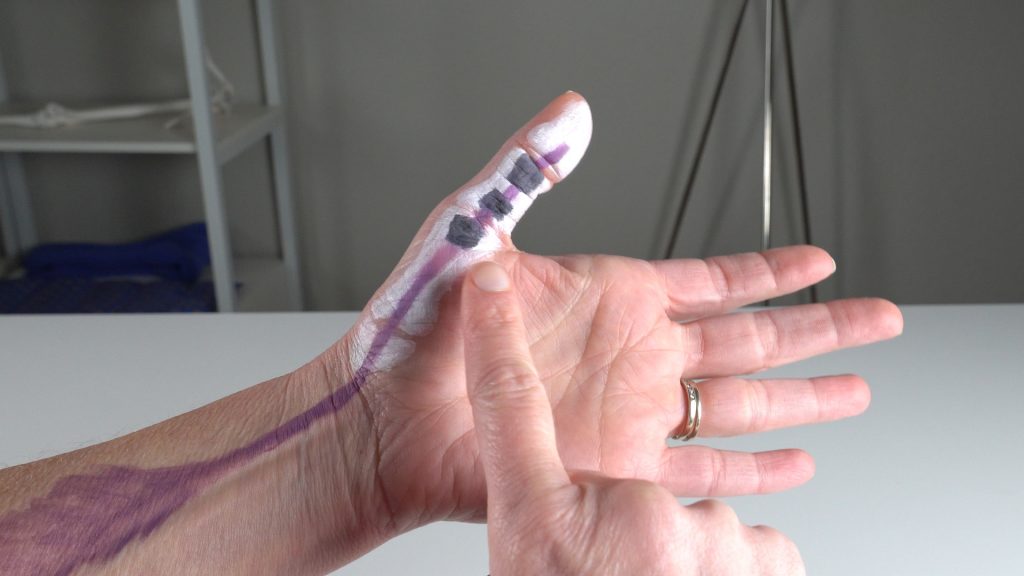
Trigger thumb is located on the palm side of your thumb.
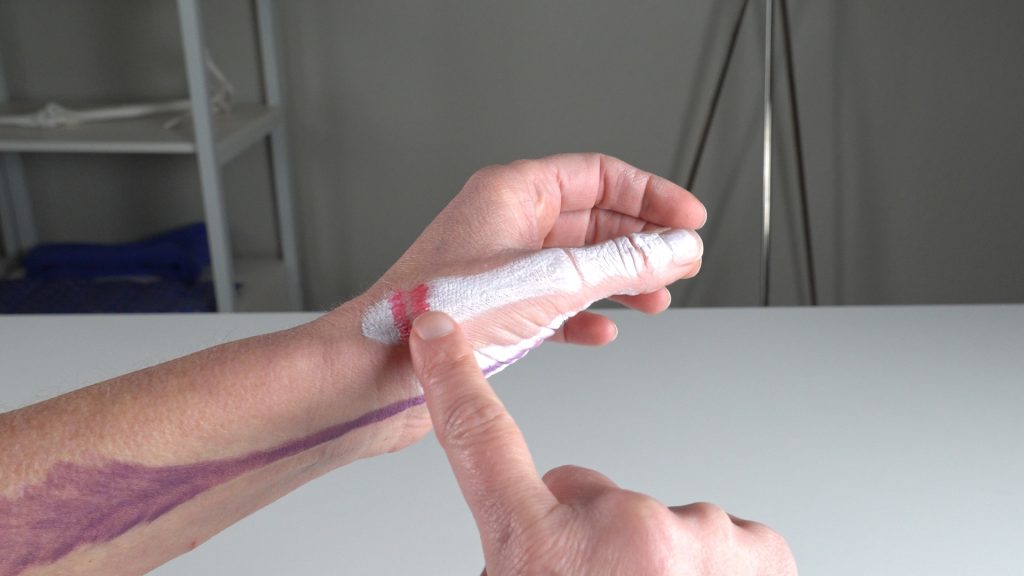
Thumb CMC arthritis is located at the base of the thumb near the wrist.
2-Instability and weakness
The 2nd difference lies in the feeling of instability and weakness during specific hand movements. With trigger thumb, most of the time you feel like your hand strength is affected.
Does it hurt to grip? Yes, because of the tendon catching but you still have strength.
However, with thumb CMC arthritis, you may experience weakness and instability because of the bony changes and loss of cartilage at the base of your thumb. The physical foundation of your thumb has changed.
This affects the stabilizing ligaments and muscles that surround your thumb. With that, you may feel unstable, or unable, to apply force with twisting motions, opening jars, turning door knobs, or holding heavy objects.
3- Onset of symptoms
Typically a trigger thumb comes on suddenly. You could just wake up with it one morning. It can also be triggered by repetitive thumb motions or certain activities such as painting all the bedrooms in your house.
Thumb CMC Arthritis is more of a gradual development over time due to joint wear and tear. Sure, you may feel soreness or an occasional twinge with certain movements, but it might not be years later that it starts constantly bothering you.
What’s the Treatment?
The good news is, most of the time, you can treat both trigger thumb and thumb CMC arthritis naturally without surgery.
For trigger thumb, splinting, thumb specific exercises, activity modification, and in some cases steroid injections can provide relief. In fact, one study showed trigger thumb was resolved conservatively, without any treatment. BUT it took 8 months!
If you’re interested in healing your trigger thumb naturally (and in less than 8 months) then check out my Unlocked: Fix Your Trigger Trouble program. In this program, I tell you step-by-step how to let your trigger thumb tendon rest, how to exercise your thumb without triggering, and how to get back to using your hand quickly for the activities you love.
To learn more you can check that out here.
Thankfully, thumb CMC arthritis also has positive results with less invasive treatments such as soft splinting or external support, activity modification, joint protection strategies, thumb stretches and thumb stabilizing exercises.
Fortunately, you can see changes fairly quickly once you start implementing these strategies.
And I can show you how to do all that in 1 month.
If you’re interested in getting your thumb arthritis pain under control then join my 30 Day Thumb Arthritis Training program: Build thumb stability, preserve joint health, and win back your favorite hobbies in 4 weeks.
Click here to learn more about that.
Conclusion
As you can see, these two look alike thumb conditions can be easily confused with one another.
Nonetheless, early diagnosis, and treatment are key to managing your symptoms effectively and preventing further damage to your thumb and hand.

